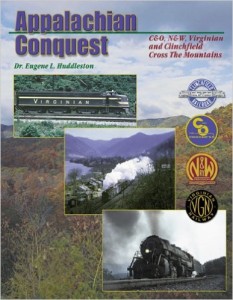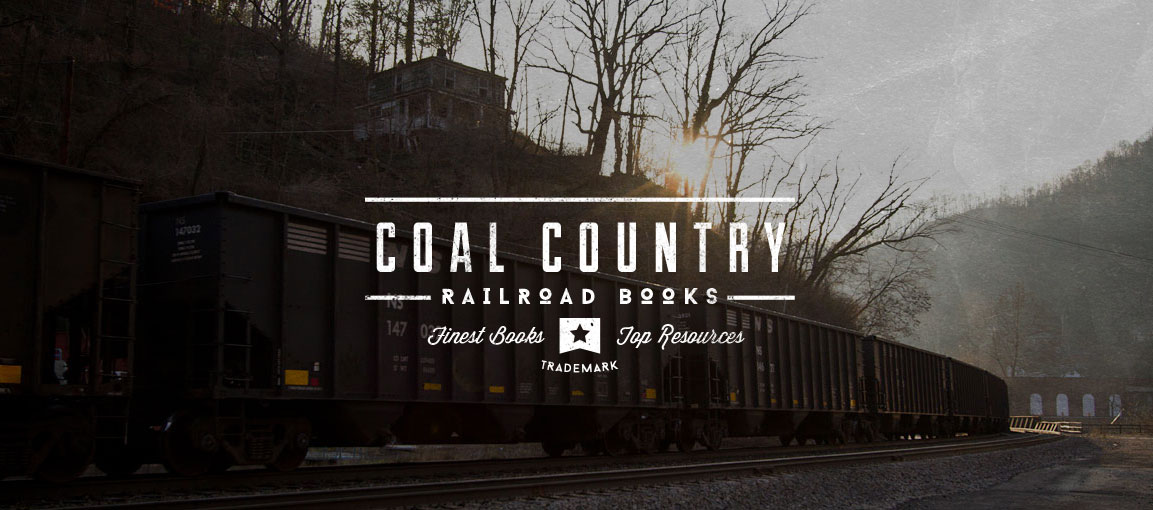
Coal Related Railroading Photography Books
This book list features mainly coal hauling railroads, coal regions, and coal mining operations. A few books on this list focus on West Virginia which is historically known as coal country. This area of the United States relied heavily on railroads to transport the black diamonds from mine to destination. I have been fascinated with coal being transported by railroads since I was a child; with much of my interest focused on Wyoming and the Powder River Basin. Over the last few years, I have grown to love West Virginia and the coal history that still lingers in the mountains as its’ antiquity is engrained throughout the communities and people.
How to Use
This Coal Railroading book list is subject to change as more books are added. All the titles on this list I have personally viewed or I own. Below each title is a list of information about the book. This information comes from my copies, as other versions may exist. Photographs: This describes if the book contains a variety of color and/or black and white images. Main Image Style: This describes the images in the book being more traditional in nature or dramatic or artistic. Content: This will let the reader know what they should expect regarding how much text is in the book. Text means there are pages of writing and captions indicate that text is limited. Recommended: A 1/10 scale of my personal rating of the book. This is based off the overall quality and value the book has to me. Many factors come into play including photos, print quality, size, layout, content, page count, and how well it covers it’s subject.
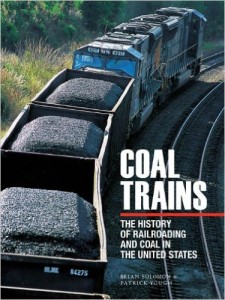 Coal Trains: The History of Railroading and Coal in the United States
Coal Trains: The History of Railroading and Coal in the United States
Recommended | 10/10
A complete guide to coal transportation by railroads. The book is exceptionally well laid out with a great balance of images and text that leaves you feeling satisfied.
From the first, U.S. railroads have carried coal from mines to docks, steel mills, and power plants across the country. In this authoritative book spanning the whole of that history, from the mid-nineteenth century to present, noted rail author Brian Solomon explores the railroads and hardware that have transported the fossil fuels that made America work. Brilliant period and contemporary photographs convey the drama of the enterprise: the very long—and very heavy—trains powering up mountain grades and thundering across barren prairies.
At sites from the eastern and western U.S., past and present, readers see giant double-headed Norfolk and Western steam locomotives moving Appalachian coal in Virginia; modern CSX diesels dragging unit coal trains over the well-groomed former Chesapeake & Ohio main line; BNSF’s SD70MACs with more than 100 hoppers in tow; Rio Grande locomotives snaking through the Rocky Mountains; and coal trains working full-throttle up Colorado’s Tennessee Pass, cresting the Continental Divide at 10,000 feet above sea level. Taking up topics ranging from the colorful but now-defunct “anthracite roads” of eastern Pennsylvania to today’s AC-traction diesels that work Wyoming’s thriving Powder River Basin, Solomon reveals how for 150 years the unique demands of coal—and America’s demand for coal—have prompted new railroad technologies. Read Customer Reviews
Author | Brian Solomon
Photographs | Black and White and Color ![]()
Main Image Style | Traditional
Content | Text & Images
Time Period | Historical to Present
Pages | 160
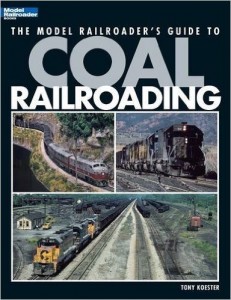 The Model Railroader’s Guide to Coal Railroading
The Model Railroader’s Guide to Coal Railroading
Recommended | 9/10
You definitely do not need to be into model railroads to love this book. This book is full of real world coal industry information, photos, and diagrams. It is a great inside look of the coal mining, loading, transportation, and end use facilities that many other books do not cover. I only wish it was longer.
Master modeler Tony Koester gives you a handy reference for modeling a coal-hauling prototype-based or freelance railroad. Chapters introduce coal and the coal industry. Includes information on modeling coal trains, company towns, and coal customers, plus operating tips. Read Customer Reviews
Author | Tony Koester
Photographs | Black and White and Color ![]()
Main Image Style | Traditional
Content | Text & Images
Time Period | Historical to Present
Pages | 96
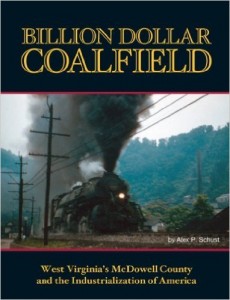 Billion Dollar Coalfield
Billion Dollar Coalfield
Recommended | 10/10
This is by far the most thorough book on any one subject. If you are interested in the coal industry in southwestern West Virginia, you just need to buy this book. A historical masterpiece the size of a very large dictionary.
Billion Dollar Coalfield is the story of McDowell County West Virginia, its communities and its coal industry as it traces the sweet and bitter fruits of a coal mining economy from the first shipment of coal in 1888 to the demise of the last of the pioneering coal operations in 1988. The quest for coal built 106 of the 125 McDowell County communities shown on modern maps. Billion Dollar Coalfield uses court records, deeds, letters, diaries, oral recollection, technical journals and newspapers to tell the who, what, when, where, how and why those communities were built. Filled with 515 photographs, 100 maps and 47 company letterheads, the 640 pages of Billion Dollar Coalfield describes how the communities and the coal operations made McDowell County the leading coal producing county in West Virginia. Billion Dollar Coalfield follows the tracks of the Norfolk & Western Railway along the main line and the branch lines that followed the rivers and creeks and reached into the hollows to haul away the coal for steel making, export, home heating and multiple other uses. Billion Dollar Coalfield takes the reader from Maybeury to Isaban, from Crumpler to Bishop and through all of the coal communities in between. Its pages show how the coal industry grew the population to nearly 100,000 people in 1950 and dropped it to 35,000 by 1990. Billion Dollar Coalfield is a story of success and failure as it completes the history found in Gary Hollow and Coalwood. While each book is complete within itself, taken together, this Coalfield Trilogy, provides the reader an incomparable record of life and work in the Billion Dollar Coalfield of McDowell County. Billion Dollar Coalfield is a hard cover book in a 9 inch by 12 inch format with high. Read Customer Reviews
Author | Alex Schust
Photographs | Black and White ![]()
Main Image Style | Traditional
Content | Text & Images
Time Period | Historical
Pages | 634
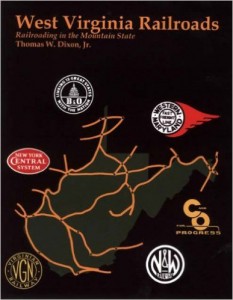 Coal Trains: The History of Railroading and Coal in the United States
Coal Trains: The History of Railroading and Coal in the United States
Recommended | 7/10
This book outlines the history of railroading in West Virginia from the earliest entry of Baltimrore & Ohio into what was then western Virginia up to the 1960s. In addition to B&O, Chesapeake & Ohio, Western Maryland, Norfolk & Western, and Virginian have major chapters. Smaller sections cover the New York Central, short lines, logging railroads, and others that had only a smaller presence in the state. Coal mining and lumbering, of course, tie in directly with most West Virginia railroads. Photos, maps, and illustrations tell the story in addition to history that links the various parts of West Virginia railroading into a coherent narrative. Read Customer Reviews
Author | Thomas W. Dixon Jr.
Photographs | Black and White![]()
Main Image Style | Traditional
Content | Text & Images
Time Period | Historical
Pages | 128
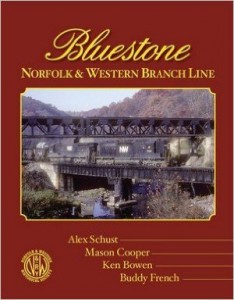 Bluestone: Norfolk and Western Branch Line
Bluestone: Norfolk and Western Branch Line
Recommended | 8/10
Bluestone – Norfolk & Western Branch Line is the first in a series of NWHS publications about major branch lines of the N&W. This 128-page, soft cover book has over 130 black and white pictures plus an additional 70 maps, charts and time tables to take the reader from the first crossing of the Bluestone in 1884 to the last major coal operation on the branch line shutting down in 1984. The book uses the 1927 track chart as a basis for describing the curves, bridges and grades as tracks were laid to serve the 21 major coal operations on the branch. The book also uses the N&W Railroad records to explain how the Flat-Top Extension and its proposed pathway to the Ohio River became the Bluestone Branch. Read Customer Reviews
Author | Alex Schust, Mason Cooper, Ken Bowen, Buddy French
Photographs | Black and White![]()
Main Image Style | Traditional
Content | Text & Images
Time Period | Historical
Pages | 122
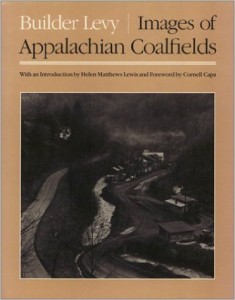 Images of Appalachian Coalfields
Images of Appalachian Coalfields
Recommended | 7/10
The pictures here represent fourteen years of visiting and photographing Appalachian coal miners, their families, and neighbors. This book allows me to share my personal vision of these people and their environment, hidden from most of the nation in small towns and villages, tucked away in the hollows of the steep mountains and rolling hills of West Virginia, Kentucky, and western Pennsylvania’. With compassion and sensitivity, Builder Levy presents the coal mining communities of Appalachia. His compelling images, in 93 duotones, portray a once-beautiful region that has been increasingly scarred by an industry that has never demonstrated respect for the land or its people. For several decades the U.S. coal mining industry has been in a period of transition: technological advances have created massive layoffs; women have entered the workforce; the racial composition of mining communities has changed; and, environmental and health advocates have gained voice. The narrative accompanying Levy’s photographs details these social and economic changes as revealed through the lives of people who endure the poverty and hardship of mining life, who cling to their family and community amid crises, and who are sustained by their traditions and their culture. The photos themselves reveal the toll that this struggle has taken. While memories of mine disasters and the daily threat of danger and black lung disease remain throughout these communities, Levy focuses on the dignity of the residents and their struggle against adverse conditions. Levy describes the sometimes mixed reception he received from miners, foremen, and company guards at various mining sites. By ‘reading’ the images, one senses that he did not simply gain access to witness but fully participated in the daily ‘mantrips’, the comfortable hospitality, the unity of miners surfacing after a long day underground. “Images of Appalachian Coalfields” forces the reader to confront the life of a mining community, to recognize the faces of struggle, camaraderie, defiance, endurance, and to admire the intense vision of a photographer whose love of subject pays homage to the human spirit. Builder Levy is a teacher in a New York City alternative high school. His photographs have been exhibited in museums and galleries, and included in permanent collections and numerous publications throughout the world. Read Customer Reviews
Author | Builder Levy
Photographs | Black and White![]()
Main Image Style | Artistic
Content | Text & Images
Time Period | Historical
Pages | 124
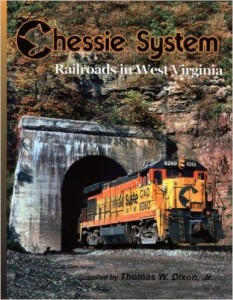 Chessie System: Railroads in West Virginia
Chessie System: Railroads in West Virginia
Recommended | 6/10
From the first, U.S. railroads have carried coal from mines to docks, steel mills, and power plants across the country. In this authoritative book spanning the whole of that history, from the mid-nineteenth century to present, noted rail author Brian Solomon explores the railroads and hardware that have transported the fossil fuels that made America work. Brilliant period and contemporary photographs convey the drama of the enterprise: the very long—and very heavy—trains powering up mountain grades and thundering across barren prairies.
At sites from the eastern and western U.S., past and present, readers see giant double-headed Norfolk and Western steam locomotives moving Appalachian coal in Virginia; modern CSX diesels dragging unit coal trains over the well-groomed former Chesapeake & Ohio main line; BNSF’s SD70MACs with more than 100 hoppers in tow; Rio Grande locomotives snaking through the Rocky Mountains; and coal trains working full-throttle up Colorado’s Tennessee Pass, cresting the Continental Divide at 10,000 feet above sea level. Taking up topics ranging from the colorful but now-defunct “anthracite roads” of eastern Pennsylvania to today’s AC-traction diesels that work Wyoming’s thriving Powder River Basin, Solomon reveals how for 150 years the unique demands of coal—and America’s demand for coal—have prompted new railroad technologies. Read Customer Reviews
Author | Thomas W. Dixon Jr.
Photographs | Color ![]()
Main Image Style | Traditional
Content | Text & Images
Time Period | Historical
Pages | 64
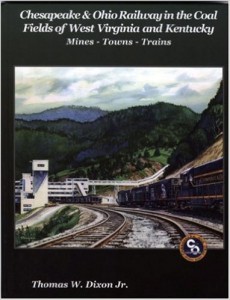 Chesapeake & Ohio Railway in the Coal Fields of West Virginia and Kentucky
Chesapeake & Ohio Railway in the Coal Fields of West Virginia and Kentucky
Recommended | 7/10
A new look at mines, towns, trains, people that were involved in transportation of coal from mine to market on C&O in the period 1945-1960. Chapters include Background; Coal Fields Motive Power; Coal Fields Rolling Stock; C&O Coal Operations; Coal Towns; Mines & Tipples. Most photos are from C&O official files and illustrate every aspect of coal mining and transportation. Maps show branches and their relationship to whole scheme. Ideal for C&O fans, modelers, and those interested in the coal fields of Appalachia. If you have the C&OHS’s 1995 book C&O in the Coal Fields, this book is ALL NEW, and does not repeat the photos or data. Read Customer Reviews
Author | Thomas W. Dixon Jr.
Photographs | Black and White![]()
Main Image Style | Traditional
Content | Text & Images
Time Period | Historical
Pages | 108
Appalachian Conquest
Recommended | 7/10
A complete treatise on how topography affected the major Pocahontas region railroads crossing of the Appalachian Mountain range. The C&O, N&W, Virginian and Clinchfield all had different approaches to crossing the rugged Appalachians. Great for modelers, any fan of the Pocahontas roads, and anyone interested in the Appalachian region. Read Customer Reviews
Author | Eugene L. Huddleston, Ph.D.
Photographs | Black and White & Color![]()
Main Image Style | Traditional
Content | Images & Text
Time Period | Historical
Pages | 138
 Bernd & Hilla Becher: Coal Mines and Steel Mills
Bernd & Hilla Becher: Coal Mines and Steel Mills
Recommended | 7/10
The core themes of Bernd and Hilla Becher’s extensive work from the early 1960s on were the coal mines and steel mills in the German ruhr region and other iron smelting regions of the world, from Lothringen to Pittsburgh.
By way of a contribution to the European Capital of Culture “Ruhr.2010” program, the Josef Albers Museum Quadrat in Bottrop has compiled a comprehensive exhibition with photographs by Bernd and Hilla Becher on this key subject. The exhibition centers on the “industrial landscapes,” as the two artists called them. The Bechers did not seek to depict these areas as individual architectural objects, but rather to contextualize them as complete facilities and heavy industry complexes in their urban and rural environment. Now that iron smelting as an industry has almost completely disappeared from the Ruhr region and the European coal mining industry is following hard on its heels, this collection of impressive pictures, which includes photographs from the German Siegerland region, Great Britain, France, and the USA, provides an overview, which we can already deem to be nostalgic, of a past era of industrial history. Our publication accompanies the exhibition with a total of 154 duotone plates of mines and iron works from all over the world.
Heinz Liesbrock, art historian and Director of the josef Albers Museum, wrote the introductory essay to this publication. As well as famous Becher icons, the volume also features many previously unpublished photographs. Read Customer Reviews
Author | Heinz Liesbrock
Photographs | Black and White ![]()
Main Image Style | Artistic
Content | Images
Time Period | Historical
Pages | 188

About the Author
Travis Dewitz is a professional photographer located out of Eau Claire, Wisconsin. He has been published in many books and magazines including many in the railroad industry. He does a lot of photography work and environmental portraitures for many companies and heavy industries in and around Wisconsin. He has grown up with trains and railroads are one of his passions that he pursues. His railroad photography can be seen on his website The Railroad Collection.
Like and Share with your friends and family!

